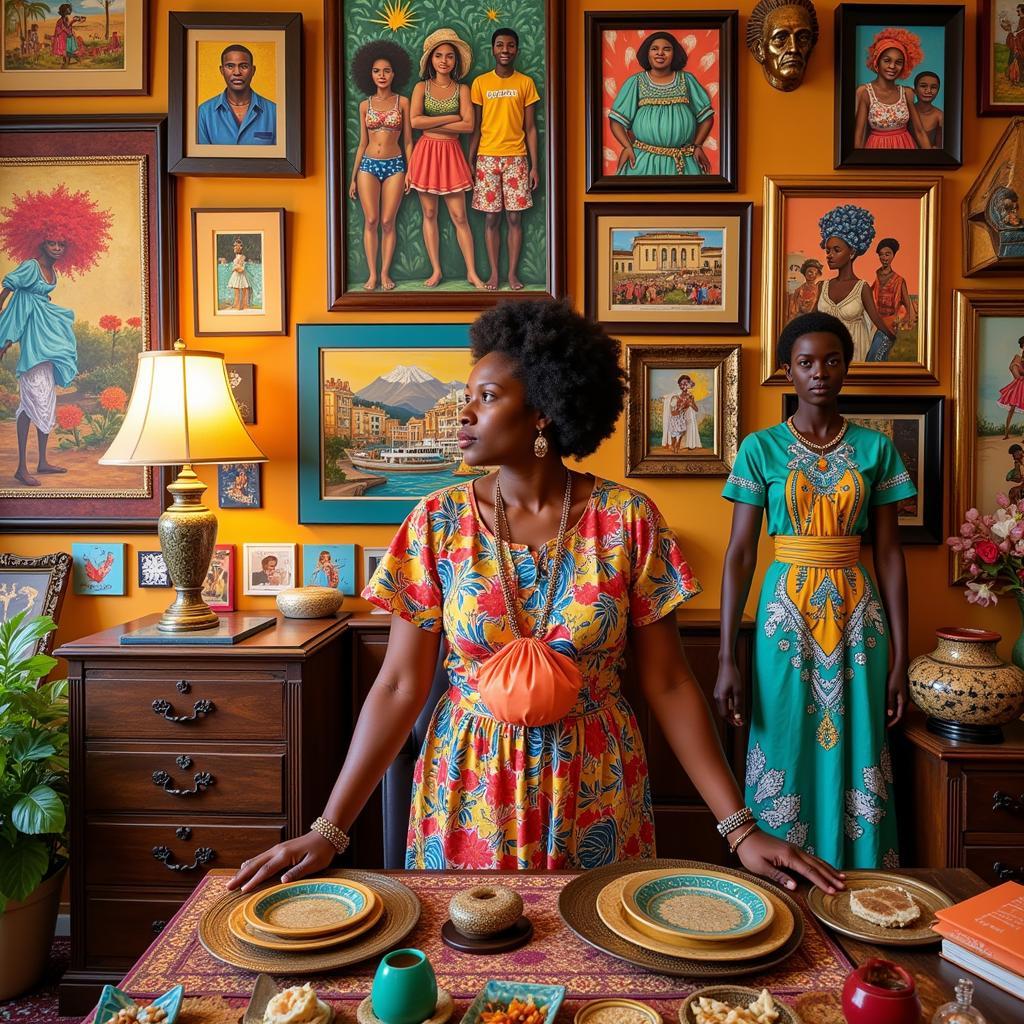The Rhythmic Soul of African American Steppers
African American Steppers are keeping a vibrant cultural tradition alive. Stepping, a percussive dance form with roots in African and African American history, is more than just synchronized movements; it’s a powerful expression of community, pride, and heritage. This article delves into the captivating world of African American steppers, exploring its history, significance, and the infectious energy that drives this unique dance form.
A Journey Through Time: The History of Stepping
Stepping’s origins can be traced back to various African and African American traditions. From the gumboot dances of South African miners to the rhythmic handshakes and calls of Black fraternities and sororities, the seeds of stepping were sown in communities seeking connection and expression. Historically, stepping served as a form of communication, a way to build unity and share stories in times when verbal expression was restricted. It evolved as a powerful symbol of resilience and cultural identity.
From Fraternity Rituals to Mainstream Stage: Stepping’s Evolution
The modern form of stepping as we know it emerged in the mid-20th century within the historically Black colleges and universities (HBCUs) of the United States. African American fraternities and sororities began incorporating stepping into their rituals and performances, adding intricate rhythms, synchronized movements, and complex formations. This unique blend of percussive sounds, chants, and stylized steps quickly gained popularity, spreading beyond the walls of HBCUs and captivating audiences nationwide.
The Significance of Stepping in African American Culture
Stepping is more than just a dance; it’s a living embodiment of African American history, community, and pride. It represents a powerful connection to ancestral roots, a celebration of heritage, and a testament to the strength and resilience of the African American community. Through stepping, individuals connect with their history, express their identity, and create a sense of belonging.
Stepping as a Vehicle for Social Change and Empowerment
Stepping has also become a platform for social commentary and change. Many stepping groups use their performances to raise awareness about social issues, promote education, and empower youth. The discipline, teamwork, and dedication required to master the intricate steps translate into valuable life skills, fostering leadership, self-confidence, and community engagement.
What Makes Stepping Unique? The Elements of the Dance
The distinctive sound of stepping comes from the intricate combination of hand claps, foot stomps, and vocal chants, creating a powerful and infectious rhythm. The synchronized movements, complex formations, and stylized steps demand precision and teamwork, showcasing the dedication and skill of the steppers.
The Power of Rhythm and Synchronization: The Heart of Stepping
The rhythmic precision and synchronization are central to stepping. The dancers move as one, creating a visual and auditory spectacle that is both captivating and energizing. Each step, clap, and chant is carefully choreographed, contributing to the overall impact of the performance.
“Stepping requires immense discipline and teamwork,” says Dr. Anika Johnson, a cultural anthropologist specializing in African American dance forms. “It’s not just about individual skill, but about the collective energy and synchronized movements that create the magic of stepping.”
Stepping into the Future: Preserving and Evolving a Tradition
African American steppers continue to innovate, blending traditional steps with contemporary influences, ensuring the art form remains vibrant and relevant for future generations. Stepping has found its way into popular culture, appearing in movies, television shows, and music videos, further expanding its reach and influence.
Stepping’s Enduring Legacy: A Celebration of Culture and Community
Stepping is a testament to the power of cultural expression and the enduring strength of the African American community. It is a dance form that celebrates heritage, promotes unity, and inspires future generations to connect with their roots.
“Stepping is a powerful expression of our history and identity,” explains renowned choreographer and stepping coach, Mr. Jamal Thompson. “It’s a way to honor our ancestors and pass down a rich cultural legacy to our children.”
Conclusion: The Rhythmic Heartbeat of a Community
African American steppers keep the vibrant tradition of stepping alive, carrying forward a powerful legacy of cultural expression, community, and pride. From its historical roots to its contemporary evolution, stepping remains a captivating and inspiring dance form that connects generations and celebrates the rich tapestry of African American culture.
FAQ
- What are the origins of stepping? (Stepping originated from a blend of African and African American traditions, including gumboot dancing and the rhythmic rituals of Black fraternities and sororities.)
- Where did modern stepping emerge? (Modern stepping emerged in the mid-20th century within historically Black colleges and universities (HBCUs).)
- What is the significance of stepping in African American culture? (Stepping represents a connection to heritage, a celebration of identity, and a platform for social change and empowerment.)
- What makes stepping unique? (Stepping’s uniqueness lies in its percussive sounds, synchronized movements, complex formations, and stylized steps.)
- How is stepping evolving? (Stepping continues to evolve through the incorporation of contemporary influences and its growing presence in popular culture.)
Looking for more information on African culture? Explore other related articles on our website about African music, art, and traditions.
Need assistance? Contact us 24/7: Phone: +255768904061, Email: [email protected], or visit us at Mbarali DC Mawindi, Kangaga, Tanzania.


